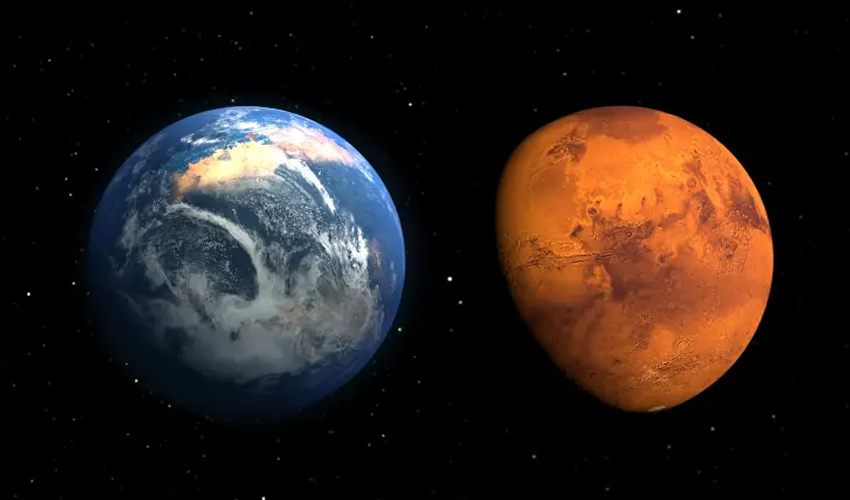In a fascinating discovery, scientists have uncovered a cosmic connection between Earth and Mars that affects deep ocean currents.
According to a recent analysis of the deep-sea geological record, the gravitational interaction between the two planets results in cyclic changes in deep ocean currents occurring every 2.4 million years. This finding holds significant implications for our understanding and prediction of Earth's climate patterns.
Lead researcher Adriana Dutkiewicz, a geoscientist at the University of Sydney, expressed surprise at finding these 2.4-million-year cycles in deep-sea sedimentary data. The cycles appear to be linked to the interactions of Mars and Earth orbiting the Sun, suggesting a hidden celestial influence on Earth's climate.
Scientists have previously identified a 2.4 million-year pattern, termed an astronomical "grand cycle," associated with the alignment between the orbits of Earth and Mars. While evidence of this interaction in Earth's geological record is limited, the peak of this cycle appears to coincide with higher solar radiation and warmer climates on Earth.
Unlike shorter Milankovitch cycles influenced by Jupiter and Saturn, the Earth-Mars interaction produces longer-term climate cycles. These findings challenge previous assumptions about the impact of global warming on deep ocean currents, suggesting that warmer oceans may actually experience more vigorous circulation.
By analyzing deep-sea drill holes from around the world spanning 70 million years, Dutkiewicz and her team identified breaks in sediment that aligned with the 2.4-million-year cycle and periods of warmer climate. This correlation indicates a potential link between Earth-Mars interactions and climate events such as the Paleocene-Eocene thermal maximum.
The discovery suggests that even as global warming threatens to disrupt ocean circulation, warmer climates may paradoxically lead to more vigorous deep ocean currents. This resilience of the ocean's circulation system could have significant implications for Earth's climate stability in the face of ongoing environmental changes.
While the study sheds new light on the complex interplay between celestial bodies and Earth's climate, researchers emphasize the importance of continued efforts to mitigate anthropogenic climate change to protect the planet and its inhabitants.



























